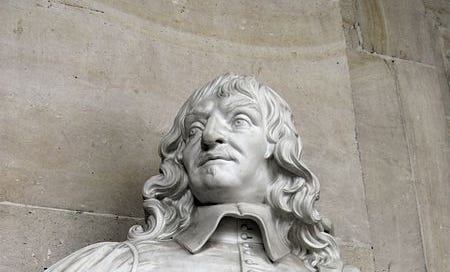Fellow philosophers,
Today, we’re taking a trip back in time.
It’s the early 17th century, and we meet a young French soldier on campaign.
One evening, he encounters a Dutchman discussing mathematics. The soldier pries the Dutchman to divulge his experiments and secrets in a mysterious discipline he calls physics.
The soldier, as it turns out, was the soon-to-be famous philosopher and mathematician Rene Descartes.
Contemplating on the Dutchman’s lesson, Descartes was so inspired that he had a dream that night (so the legend goes). He awoke with a vision that changed history forever.
This experience would lead Descartes to develop what we would call analytical geometry today. Descartes had a gift, he could see the relationship between algebraic math and shapes in the physical world. (So if you hated your junior year of high school you now know who to blame!)
His work, however, would take years to be released into the larger public discourse because of the Catholic Church’s aggressive s…
Keep reading with a 7-day free trial
Subscribe to The Pocket Philosopher to keep reading this post and get 7 days of free access to the full post archives.



